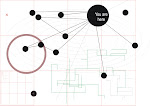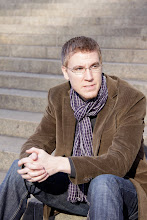Below is an overview of the project invitation to PKAP. This project unites several of my areas of interest in place, narrative and photography. My perspective upon this project extends beyond the simple, though necessary, recording of the geographical context or location, into the primary arenas of the reciprocal relationships that human stories have within the environment. One of the more intriguing factors for this project is that we are not neutral observers. As we work to uncover and understand an ancient culture we are adding to these storied places by our presence and efforts. Perhaps we can consider this a re-claiming of place. By investigating the historical relevance of these enviroments, we will begin to understand significance of the landscape to the ancients and this place will emerge in importance in our own stories.
Anyway...have a read of the project proposal.
"This winter, I've been working to recruit a talented photographer to my project in Cyprus. As part of that processes, it seemed like a good idea to attempt to articulate exactly why a photographer with an interest in sacred landscapes and place would be a good fit for our project. After all, we would not be asking him to take photographs of pottery or trenches or any of the other things that traditionally play a role in archaeological
Photography and Landscape on a Mediterranean Archaeological Project
Introduction:
The Pyla-Koutsopetria Archaeological Project (PKAP) has investigated the 2 sq. km coastal zone of Pyla Village in Cyprus since 2003. The project is a transdisciplinary, landscape-oriented investigation that has drawn upon an international team of archaeologists, historians, geologists, illustrators, and other specialists to produce a vivid, diachronic, archaeological history of a significant coastal site. In conjunction with this work, we have maintained a strong interest in engaging the wider public through the innovative use of the new media (interactive websites, blogs, podcasts, et c.) and through an "artist-in-residence" program. In 2005 and 2007 Josiah Patrow, an award winning filmmaker, served as artist-in-residence and produced two well-received documentaries. In 2009, we have invited Ryan Stander, a photographer and M.F.A. student at the University of North Dakota, to join the PKAP team. As artist-in-residence, he will have complete artistic freedom to engage the landscape of Cyprus, archaeological fieldwork, and the personalities and individuals of the PKAP team. Ryan's interest in sacred landscapes, the creation of place, and the interplay of human and natural environments coincides well with the project's archaeological interest in landscape approaches to understanding the human past. By subjecting both project and place to the photographer's gaze, we hope to introduce an exciting new context both to our work as archaeologists as well as the landscape in which we work.
Summary:
Landscape archaeology, in the broadest sense, is the study of the relationship between the natural and man-made environment over time. Generally speaking, a landscape approach to archaeology looks beyond the relatively narrow confines of a single site in order to apprehend the myriad environmental, cultural, and political relationships that shaped a particular group or community's relationship access to resources. Most landscape archaeological projects, therefore, have emphasized methods that go beyond excavation to include methods for documenting more spatial extensive areas.
The most recent wave of landscape archaeologists have come increasingly to recognize the role of the archaeologist in the construction of archaeological landscapes. This work has placed the researcher within the landscape and emphasized the archaeological method itself as an artifact of the intersecting influences that recursively define and produce a distinctly modern sense place. In this context archaeological fieldwork emerges as one of any number of processes that create meaningful landscapes, rather than a method for creating a singular, unified landscape that contains an exclusive command of relationship between the past and place. This repositioning of archaeology has opened the door to productive dialogues with other fields that are similarly concerned with the issues of material culture, landscape, and place. This dialogue has encouraged the discipline to think critically about the methods that they use to create landscapes and realize that documenting archaeologists' engagement with the landscape forms a crucial part of contextualizing (and legitimizing) archaeological knowledge.
Since its inception, photography has played a key role in archaeological research. Tendencies to view the camera's eye uncritically as an objective representation of material reality have gradually given way to more sophisticated understandings of the camera's role in producing the kind of illusive objectivity that formed a compelling foundation for archaeological knowledge. While photographs of artifacts, architecture, and even topography will continue to appear as evidence for archaeological arguments, there has been less attention to work of photographers in creating the same kind of dynamic, discursive landscapes that archaeological knowledge imagines. By incorporating an experienced landscape photographer into a landscape archaeological project, we seek to problematize in an explicit way the role of photography in the creation of archaeological knowledge.
To do this, we have charged a landscape photographer with producing a vivid and independent counterpoint to the landscapes produced through more traditional archaeological techniques and analysis. By maintaining our fieldwork at the center of the photographer's gaze, we seek not only to produce an alternate image of the physical environment, but also to create a perspective on the archaeological landscape in the process of being created. The tension between the photographer's perspective, the natural and man-made environment, and the ongoing fieldwork will serve to contextualize archaeological knowledge as well as the subjective power of the photographer's gaze.
Photography in Context:
The Pyla-Koutsopetria Archaeological Project takes place against four different backdrops. Each environment reveals a different engagement archaeological knowledge and the social dynamics that make such knowledge possible. While Stander will be free to interpret the project however he sees fit, we thought it might prove the viability of the project by establishing a mis-en-scene for the day-to-day activities.
1) The Project in the Field. Most afternoons and many mornings teams from the project will be active at three sites in the field. During the 2009 fieldseason we will conduct small scale excavations on the prominent coastal heights of Pyla-Kokkinokremos and Pyla-Vigla as well as on the coastal plain at Pyla-Koutsopetria. These three areas are intervisible and stretch over 1.5 km along the coast. The field teams consist typically of groups of 4-6 student excavators and a trench supervisor. The directors of the project, William Caraher, David Pettegrew, and Scott Moore, and generally on hand as well.
2) The Project at the Museum. Most mornings are occupied with work at the Larnaka District Archaeological Museum. The work here consists of washing pottery excavated the previous day and processing finds from the previous seasons of fieldwork. Generally work at the museum comes under the supervision of the registrar of finds and our ceramicist, Scott Moore. The team at the museum is typically rather smaller than the team in the field usually consisting of 5 or 6 students and various specialists who are assisting with the analysis of finds.
3) The Project at Base Camp. The evenings are spent at "base camp" which is a series of rooms at the Petrou Brothers' Holiday Apartments in downtown Larnaka. The work at base camp consists of preparing the evening meal, data entry, planning meetings, and informal conversations regarding the functioning of the project. Since the quarters are quite close, work at the base camp appears chaotic.
4) The Project in the City. Unlike many archaeological projects we live and work in the bustling small city of Larnaka. Like so many Mediterranean cities, the history of the city is deeply inscribed in urban fabric. Byzantine churches, Frankish monasteries, mosques, and modern concrete buildings crowd and jostle each other attention in the densely built up urban center.
Goals:
The goal of this project is to produce a public exhibition of the photographs in the fall of 2009 and present a selection of these work online as an online gallery with commentary and discussion. The expectation is that the images that Stander provides will complement and challenge the image of the landscape produced through archaeological fieldwork and problematize the notion of a stable photographic and archaeological reality. Along with the work of Joe Patrow during the 2005 and 2007 fieldseasons, Stander's work will continue the project's commitment to a reflexive position toward archaeological research and form a vital component to the project's final archive."







